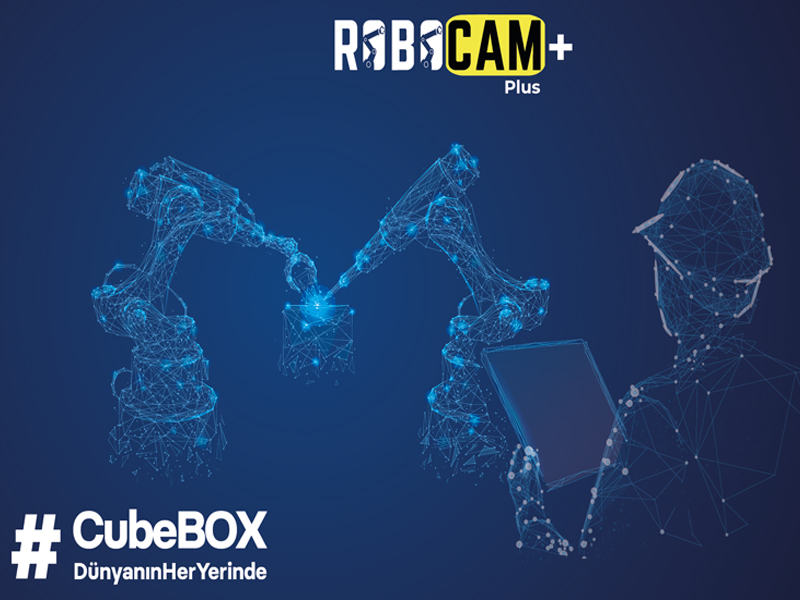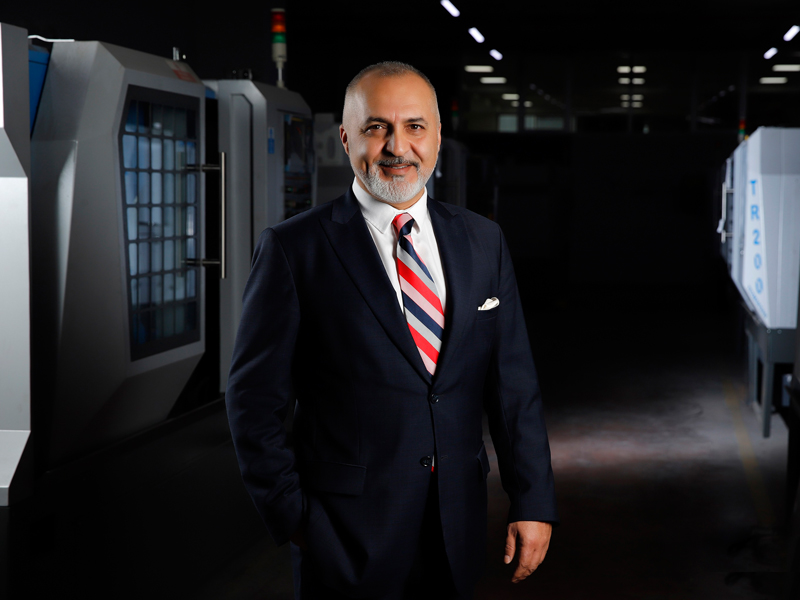

Tezmaksan, which develops tomorrow’s technologies needed by the machining industry with its long-standing knowledge, offers industrialists ease of manufacturing thanks to RoboCam Plus, which has a wide application potential in industrial and commercial areas. RoboCAM Plus, which enables effective and user-friendly programming of part feeding processes, also facilitates part feeding processes to benches or different stations with the robotic automation system CubeBOX.
Tezmaksan, which enriches the options it offers to its customers with technologies that will adapt to the developing manufacturing processes with Industry 4.0, developed RoboCAM Plus based on the needs of industrial automation, eliminates complex feeding setups from being a problem thanks to its high capability. The software, which is designed to be integrated with the robotic automation system CubeBOX, can be used in every area where robotic feeding is performed, and it adapts to the most up-to-date technology by being updated rapidly and continuously according to the feedback from customers.
Designed to integrate with the CubeBOX system
Stating that RoboCAM went through a highly functional process during its development phase, Tezmaksan Robot Technologies General Manager Serhat Volkan Yılmaz said, “Based on the needs of industrial automation, we developed RoboCAM Plus to enable effective and easy programming of part feeding to the workbench or different stations with CubeBOX. While doing this, we wanted to create a highly capable and user-friendly interface without the user needing the robot’s remote control. Normally, the feeding setup could also be done using the robot’s remote control in the system. However, the use of the robot and its remote control requires good training and knowledge. With RoboCAM Plus, we have minimized this need. This software has a wide application potential in industrial and commercial areas. Designed to integrate with the CubeBOX system, RoboCAM Plus can be used in every area where robotic feeding is performed, and can perform the work of one or more workbench operators 24/7 with high control capability. “The machine can be fed with a single workpiece or workpieces mounted on a fixture or pallet, and the parts can be stacked back into the CubeBOX or left on a conveyor at the end of the processing press,” he said.

Complex feeding setups are no longer a problem
Emphasizing that it is sometimes quite difficult to set up the workflow in feeding cells, but this is overcome with RoboCAM Plus, Yılmaz said the following about the advantages of the software: “With RoboCAM Plus, our customers can create every feeding setup. With a station-based program structure, the feeding cell is quite easy to program after the initial setup is done. Among the prominent features of RoboCAM are the ability to easily create complex feeding setups, a station-based program structure, object-based software architecture and secure use with user accounts. In addition, features such as reading part positions from DXF files and users being able to create their own matrices are also noteworthy.”
Constantly improving with feedback
Stating that they took customer feedback into consideration during the development process of RoboCAM Plus, Yılmaz said, “We are constantly improving the software by responding quickly to the feedback we receive. In the future, we plan to transform RoboCAM’s 3D modeling feature into a fully equipped offline test engine and continue the pallet pool and Cartesian robot development processes. Born as an Industry 4.0-ready software and making significant contributions to the digital transformation process, RoboCAM Plus’s design team is completely within our own organization and our sales and service team, which has been closely involved with the industry for years, carries the software to a very advantageous point. In this direction, we will continue to invest in the R&D department as a company and continue to offer the most up-to-date solutions to the needs of the sector by keeping up with the developing technology.”

